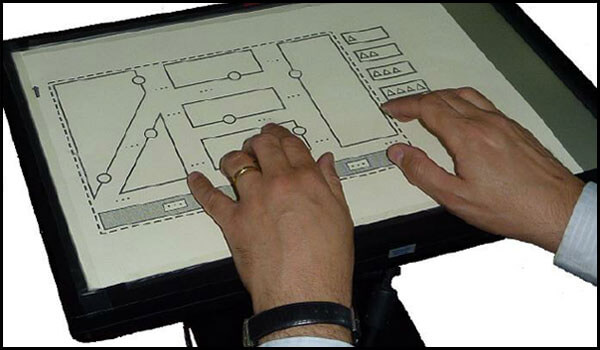
Download this free guide to creating a technical specification for the upgrade of AV systems in casinos and resorts.

In recent years, the landscape of digital signposting has undergone a significant transformation, particularly in communal areas of resorts and public venues. The integration of cutting-edge technologies has not only enhanced the aesthetic appeal and functionality of these spaces but also made them more accessible for disabled individuals. This article explores the latest advancements in digital signposting, focusing on accessibility features, and highlights key manufacturers leading the charge in this domain.
Interactive Touchscreens and Kiosks:
Modern digital signposts often feature interactive touchscreens and kiosks that provide real-time information and services. These devices are equipped with large, high-resolution displays, making it easier for visually impaired individuals to read and navigate information.
Voice-assisted navigation systems are incorporated into these touchscreens, allowing users to interact with the signposts using voice commands.
Augmented Reality (AR) Integration:
AR technology has revolutionized the way information is displayed and accessed. By using AR-enabled devices or smartphones, users can overlay digital information onto the physical environment. This is particularly beneficial for those with cognitive disabilities, as it provides intuitive, step-by-step guidance.
AR also offers customizable user experiences, where individuals can adjust settings to suit their specific needs, such as increasing text size or changing contrast levels.
Beacon Technology:
Beacons are small wireless devices that communicate with smartphones and other digital devices via Bluetooth. They are strategically placed throughout communal areas to provide location-based information and assistance.
For disabled individuals, beacons can deliver audio descriptions of the surroundings, guide them to specific locations, and alert them to potential obstacles.
Smartphone Integration and Apps:
Many resorts and public venues now offer dedicated mobile apps that work in conjunction with digital signposts. These apps are designed with accessibility in mind, featuring voice commands, screen readers, and haptic feedback.
They provide users with navigation assistance, information about facilities, and emergency contact options, ensuring a seamless and safe experience.
Customizable User Interfaces:
Digital signposts are now equipped with customizable user interfaces that cater to the diverse needs of users. This includes options to adjust text size, colour schemes, and audio settings.
Such features are particularly beneficial for individuals with visual impairments, colour blindness, or hearing disabilities.
The integration of these advanced technologies has significantly improved accessibility for disabled individuals in communal areas of resorts and public venues. Key enhancements include:
Visual and Audio Assistance: Large, high contrast displays, combined with audio output, cater to both visually and hearing-impaired individuals.
Tactile Features: Some digital signposts are equipped with braille and tactile buttons, enabling users with visual impairments to interact with them effectively.
Real-Time Updates: Digital signposts provide real-time updates on events, facilities, and emergency procedures, ensuring that all visitors, regardless of their abilities, have access to the latest information.
Wayfinding Support: Advanced navigation aids, such as AR and beacon technology, offer detailed and accessible wayfinding solutions, making it easier for disabled individuals to navigate large and complex spaces.
Several manufacturers are at the forefront of developing advanced digital signposting solutions. These companies are renowned for their innovation and commitment to accessibility:
LG Electronics:
LG offers a range of digital signage solutions that feature high-resolution displays and interactive touchscreens. Their products are designed with accessibility in mind, incorporating voice control and customizable interfaces.
Samsung:
Samsung is a leader in the digital signage industry, providing versatile and robust signposting solutions. Their products often include AR capabilities, interactive features, and beacon technology, enhancing accessibility for all users.
NEC Display Solutions:
NEC specializes in advanced display technologies and digital signage systems. Their solutions are known for their reliability and are equipped with features that support accessibility, such as large format displays and voice assistance.
Panasonic:
Panasonic offers comprehensive digital signage solutions that integrate seamlessly with various accessibility tools. Their products include interactive displays, mobile app integration, and beacon technology, ensuring an inclusive experience for all visitors.
Sony:
Sony's digital signposting solutions are recognized for their high-quality displays and user-friendly interfaces. They focus on delivering accessible solutions, with features such as voice navigation, customizable settings, and real-time updates.
Conclusion
The advances in digital signposting for communal areas in resorts and public venues have made significant strides in enhancing accessibility for disabled individuals. Through the integration of technologies like interactive touchscreens, AR, beacon technology, and smartphone apps, these digital signposts ensure that all visitors can navigate and enjoy these spaces with ease. Leading manufacturers such as LG, Samsung, NEC, Panasonic, and Sony continue to drive innovation in this field, demonstrating a strong commitment to inclusivity and accessibility.

UK General Manager, Audiotek. With over 15 years experience of advanced AV design on projects around the world, Chris is known for his creative engineering expertise.